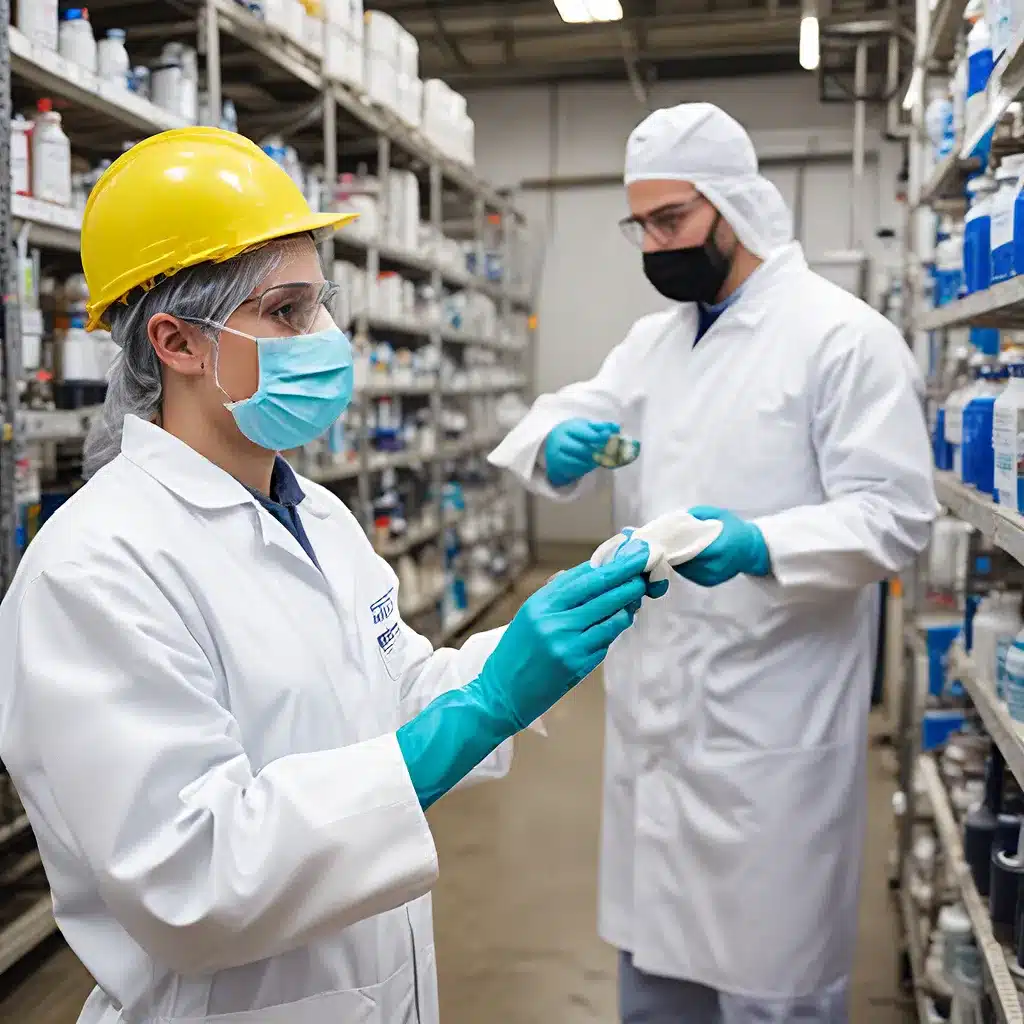
As an environmental enthusiast and self-proclaimed cleaning protocol aficionado, I’ve always been fascinated by the intricate world of chemical manufacturer cleaning procedures. It’s a realm that, on the surface, may seem straightforward – mix some solutions, scrub a few surfaces, and voila, everything’s squeaky clean. But delve a little deeper, and you’ll uncover a veritable labyrinth of regulations, best practices, and industry-specific nuances that can make even the most seasoned cleaning professional’s head spin.
Unraveling the Regulatory Landscape
Let’s start with the basics – the regulatory framework that governs chemical manufacturer cleaning protocols. Pubs.acs.org provides a comprehensive overview of the key players in this arena, from the Food and Drug Administration (FDA) to the Environmental Protection Agency (EPA) and beyond. These regulatory bodies have laid out a intricate web of standards, guidelines, and requirements that chemical manufacturers must navigate with the dexterity of a tightrope walker.
One particularly noteworthy example is the FDA’s Current Good Manufacturing Practices (cGMP) – a set of regulations that dictate everything from facility design to equipment maintenance and employee training. Compliance with cGMP is not just a nice-to-have, but a non-negotiable for any chemical manufacturer worth their salt. And woe betide the company that fails to dot their i’s and cross their t’s – the consequences can range from hefty fines to production shutdowns, not to mention the potential PR nightmare that could ensue.
But the regulatory landscape doesn’t end there. Depending on the specific chemicals being produced, manufacturers may also have to contend with hazardous waste regulations, air quality standards, and a whole host of other industry-specific requirements. It’s a dizzying web of rules and regulations, each with its own set of nuances and potential pitfalls.
Navigating the Nuances of Cleaning Protocols
So, how do chemical manufacturers keep their cleaning regimes in tip-top shape while navigating this labyrinthine regulatory landscape? It’s all about attention to detail and a willingness to adapt.
CleanroomTechnology.com highlights the critical importance of regular training and ongoing education for cleaning staff. After all, it’s not enough to simply follow a set of instructions – cleaning protocols can vary widely depending on the specific chemicals being handled, the type of equipment in use, and a myriad of other factors.
One key consideration, for example, is the use of appropriate cleaning agents. Pubs.acs.org notes that certain chemicals can react with cleaning solutions in unexpected ways, leading to the formation of hazardous byproducts or even compromising the efficacy of the cleaning process itself. Keeping up with the latest research and industry best practices is essential for staying ahead of the curve.
But it’s not just the cleaning staff who need to be in the loop. ContractPharma.com emphasizes the importance of fostering a culture of collaboration and communication within the organization. Chemical manufacturers must ensure that everyone from the C-suite to the janitor understands the critical importance of their cleaning protocols and the potential consequences of non-compliance.
The Evolving Landscape of Chemical Cleaning
But the story doesn’t end there. The world of chemical manufacturing is in a constant state of flux, with new technologies, materials, and processes emerging all the time. Pubs.acs.org notes that this ever-evolving landscape can present both challenges and opportunities for chemical manufacturers when it comes to their cleaning protocols.
On the one hand, new cleaning agents and techniques may offer more efficient, eco-friendly, or cost-effective solutions. But on the other hand, updating existing protocols to accommodate these changes can be a daunting task, fraught with potential pitfalls and unintended consequences.
And let’s not forget the impact of global events and shifting consumer preferences. ContractPharma.com highlights how the COVID-19 pandemic has heightened public awareness of cleanliness and sanitation, leading to increased scrutiny and pressure on chemical manufacturers to up their cleaning game.
A Holistic Approach to Cleaning Protocols
So, what’s the key to navigating the complexities of chemical manufacturer cleaning protocols? In my experience, it all comes down to a holistic, proactive approach.
First and foremost, it’s crucial for chemical manufacturers to stay on top of the ever-evolving regulatory landscape. Pubs.acs.org emphasizes the importance of regularly reviewing and updating internal policies and procedures to ensure compliance with the latest rules and regulations.
But it’s not just about ticking boxes. Effective cleaning protocols require a deep understanding of the specific chemicals being produced, the equipment and facilities being used, and the unique challenges and risks associated with each. CleanroomTechnology.com highlights the value of investing in comprehensive training and ongoing education for cleaning staff, empowering them to make informed decisions and respond quickly to changing circumstances.
And let’s not forget the importance of fostering a culture of collaboration and communication. ContractPharma.com emphasizes the need for chemical manufacturers to break down silos and ensure that everyone, from the executive suite to the frontline workers, understands the critical importance of their cleaning protocols and the potential consequences of non-compliance.
Ultimately, navigating the complexities of chemical manufacturer cleaning protocols is a multifaceted challenge that requires a holistic, proactive approach. It’s about staying ahead of the curve, embracing the latest technologies and best practices, and cultivating a culture of continuous improvement and adaptation.
And who knows? With the right mindset and a little bit of elbow grease, maybe even I’ll be able to hold my own in a conversation about the finer points of chemical cleaning one day. After all, as the saying goes, “the more you know, the more you realize how much there is to know.” And in the world of chemical cleaning protocols, there’s always more to discover.
So, let’s dive in, shall we? Join me on this journey as we explore the ever-evolving landscape of chemical manufacturer cleaning protocols, and discover how the team at Inland Waters Inc. is helping to keep our communities clean, safe, and sustainable.


